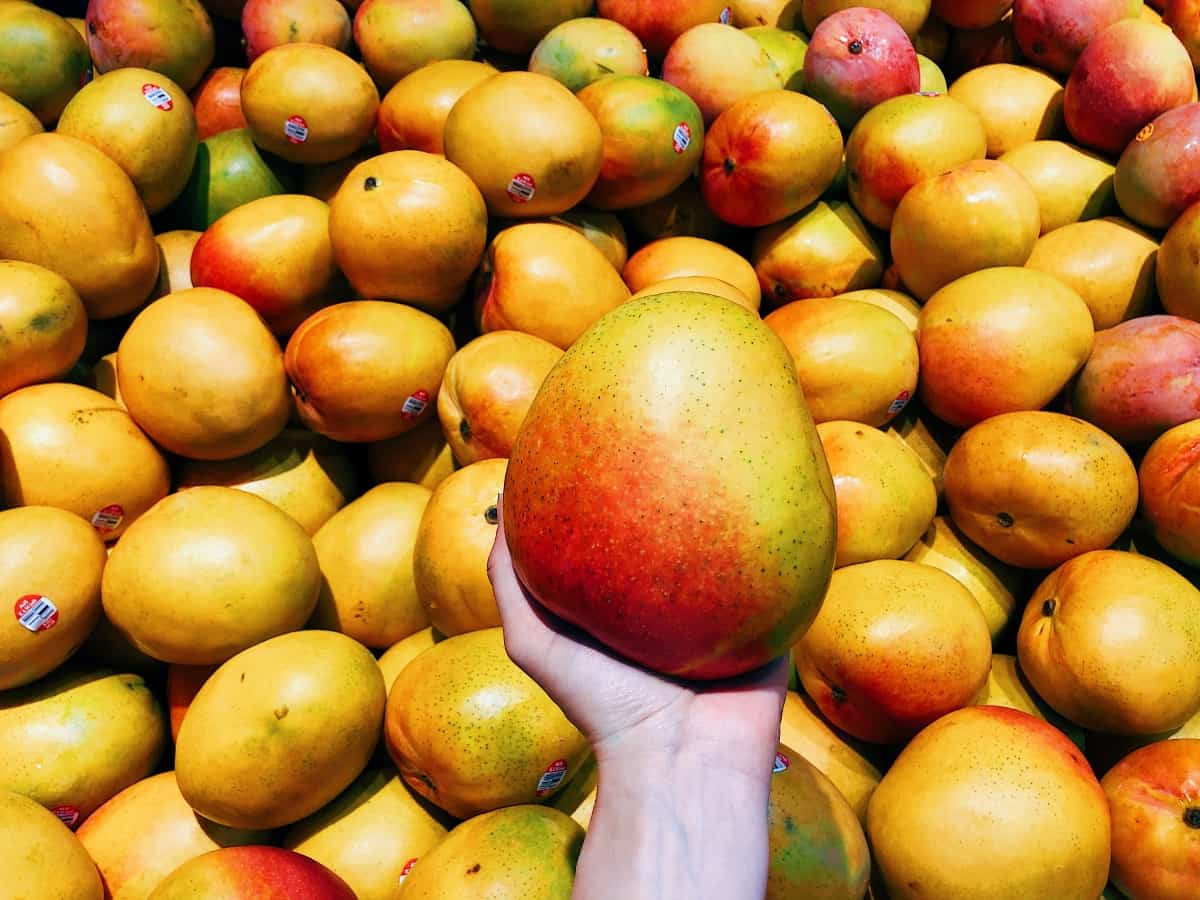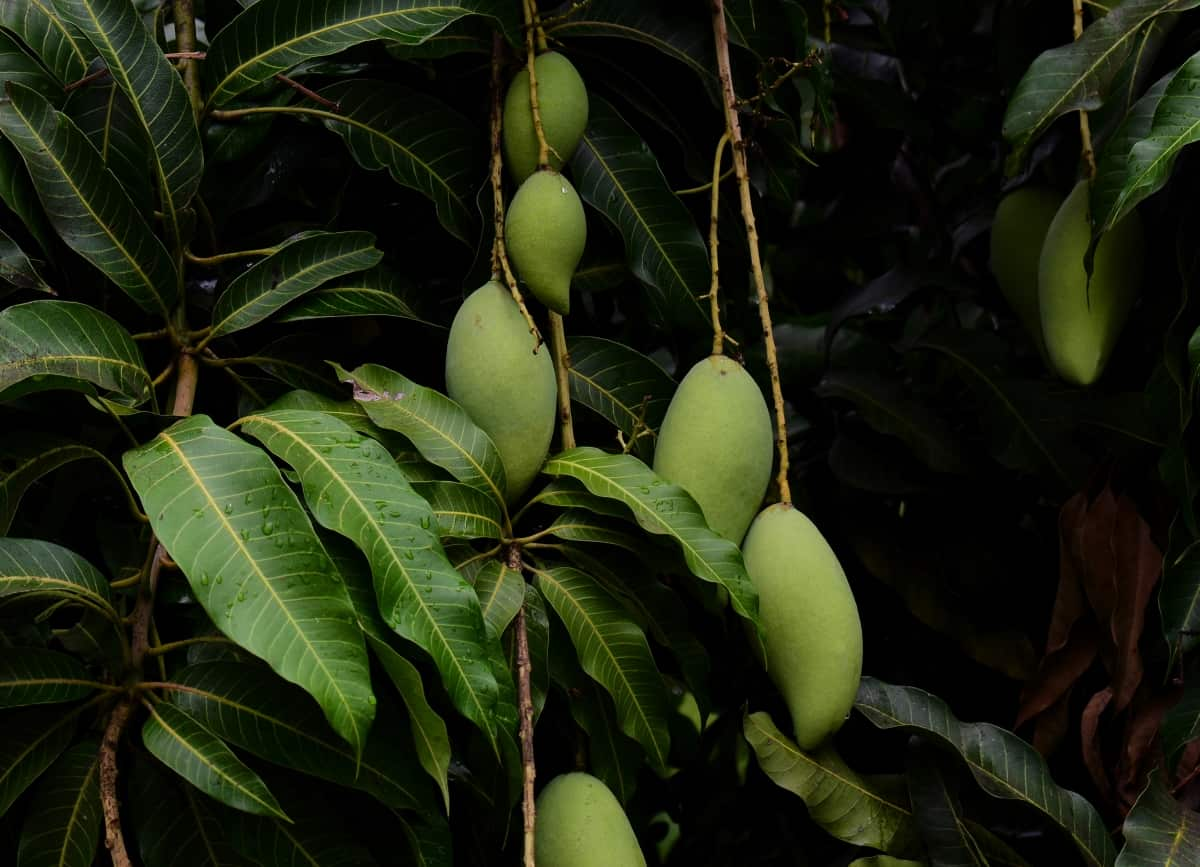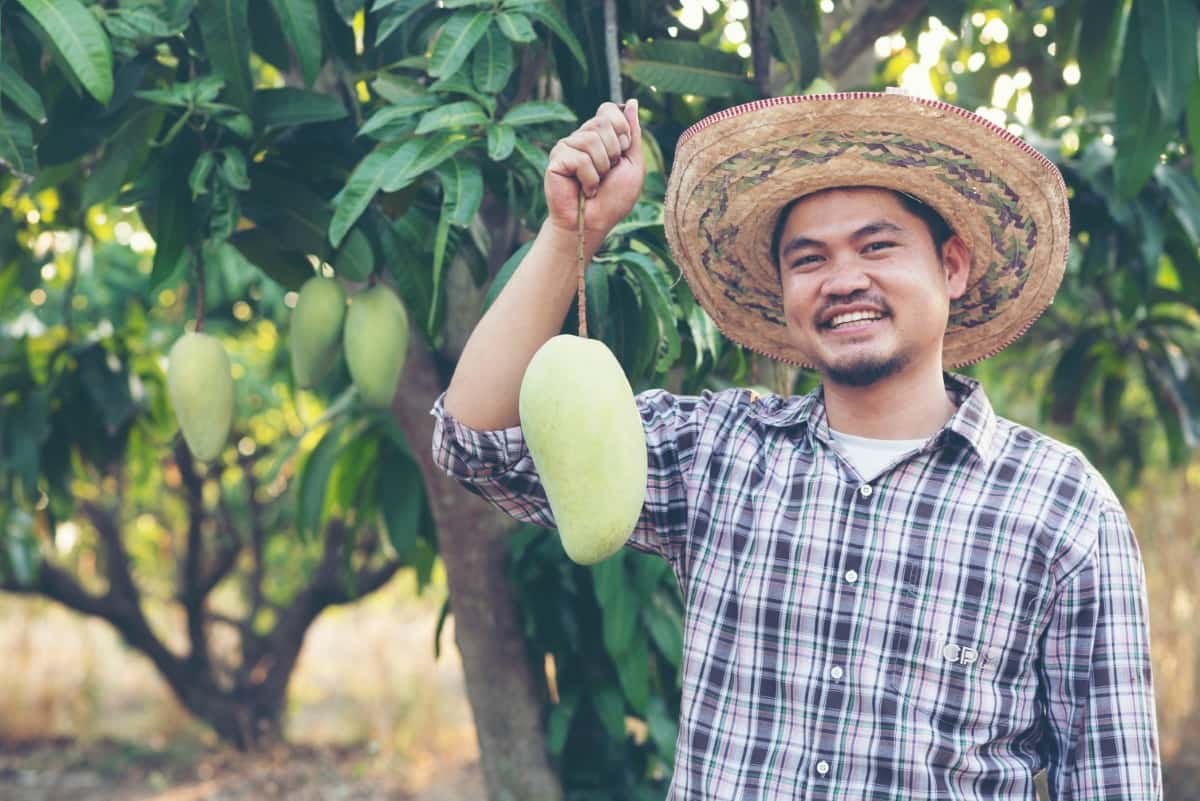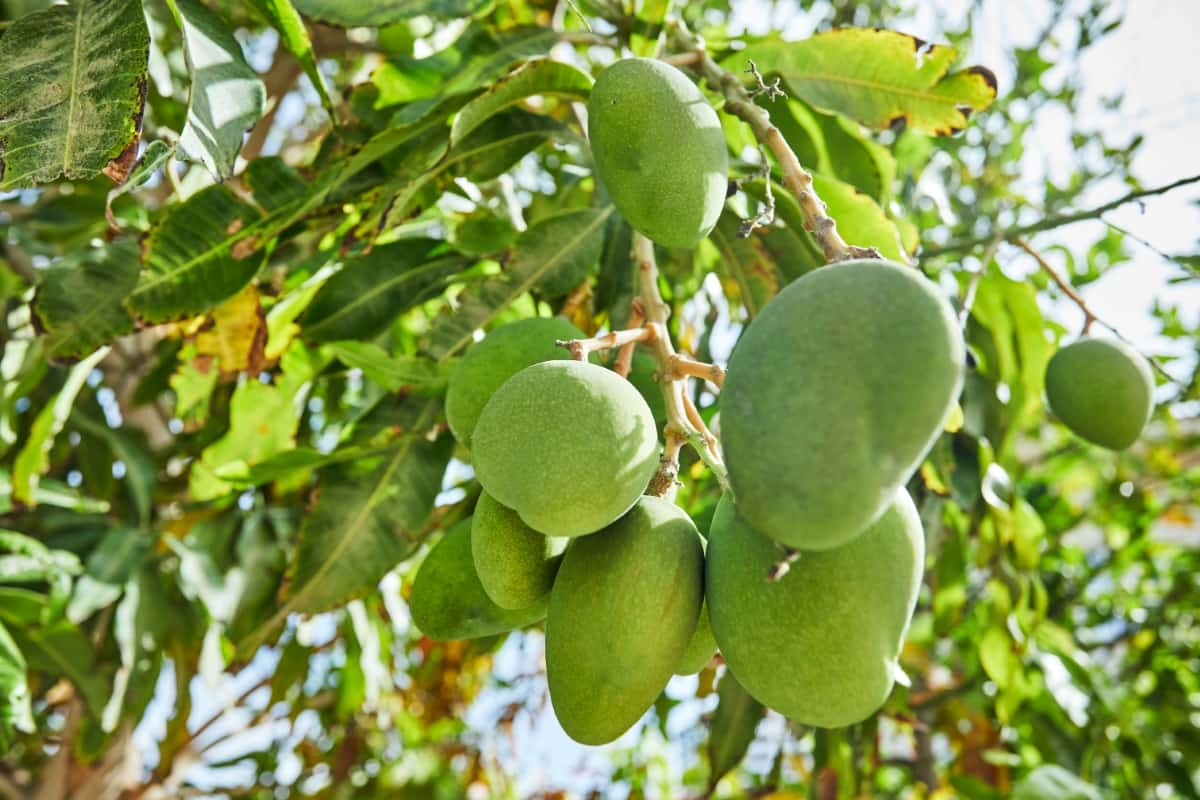Understanding the stages of Mango flower development is essential for any Mango grower or enthusiast. During the dormant period, Mango trees rest and prepare themselves for the upcoming flowering season. Once they enter the initiation stage, flower buds begin to form, setting the foundation for future blooms. The differentiation of flower parts follows, where petals, stamens, and pistils take shape.

The subsequent stage of pollination and fertilization is vital as it determines whether flowers will develop into fruits or not. This process involves transferring pollen from male to female flowers through natural means like wind or insects or human intervention like hand-pollination. Fruit development occurs after successful fertilization.
Managing Mango Flowers to Boost Yields
Factors Influencing Mango Flowering
One key factor is the age of the Mango tree. Young trees may take longer to start flowering, while mature trees tend to have more consistent and abundant flower production. Another important factor is the environmental conditions in which the Mango tree grows. Mangoes thrive in warm climates with temperatures ranging between 24-27°C during the day and 16-21°C at night.
The availability of sunlight also impacts flower formation. Mango trees require full sun exposure for at least six hours a day to stimulate growth and initiate flowering. Proper Mango Bloom nutrition is crucial for healthy flower formation as well. Deficiencies in essential nutrients like nitrogen, phosphorus, potassium, magnesium, and iron can negatively affect Mango flowering.
Optimal Nutrient Management for Better Mango Flowers
Essential Nutrients for Flowering
One crucial nutrient for flowering is potassium. Potassium promotes flower initiation and helps regulate important metabolic processes during bloom. In addition to potassium, nitrogen is another essential nutrient for flowering. Nitrogen is responsible for promoting vegetative growth, which indirectly affects flower development.
Phosphorus also plays a critical role in promoting flower bud initiation and development. It helps in energy transfer within the plant, facilitating optimal floral growth. Phosphorus deficiency can result in poor flower formation and reduced fruit set. Micronutrients such as zinc, iron, manganese, copper, boron, and molybdenum are equally important for proper flowering in Mango trees.
Soil Testing and Fertilization Strategies
By analyzing a soil sample, you can determine if any deficiencies or imbalances exist that may affect flower development. Mango trees require a balanced supply of macronutrients and also micronutrients like zinc and iron, for optimal flowering. Fertilizer application should be done at specific stages of Mango tree flowering to maximize its effectiveness. It is important to follow recommended dosage rates and application methods.
Irrigation Practices for Flowering
Watering Techniques During the Flowering Stage
Proper Watering practices for Mango Flowers can significantly impact the yield and quality of your Mango crop. Mango trees prefer well-drained soil, so excessive moisture can cause root rot and other diseases. Additionally, pay attention to timing when watering your Mango trees during flowering. It’s best to irrigate early in the morning or late in the evening when temperatures are cooler and evaporation rates are lower. This allows for better absorption by both roots and flowers.
Monitoring Soil Moisture Levels
Proper irrigation practices play a key role in ensuring healthy Mango flower development and ultimately boosting yields. To effectively monitor soil moisture levels, it is essential to use reliable tools such as soil moisture sensors or tensiometers. These devices help determine when and how much water your Mango trees require. Regularly checking these readings allows you to make informed decisions about irrigation scheduling.
Pest and Disease Control in Flowers
Common Pests and Diseases Affecting Mango Flowers
One common Mango Flower Pest is the Mango Leafhopper. This tiny insect causing flower buds to wither and die. Another pesky intruder is the Mango Fruit Fly, which lays eggs in developing fruit. The larvae then feed on the flesh of the fruit, leading to premature drop or poor-quality harvest.
In addition to pests, Mango Blossom Diseases such as Anthracnose and Powdery Mildew can also pose a threat to Mango flowers. Anthracnose causes black lesions on flower panicles, while Powdery Mildew results in a white powdery coating on leaves and inflorescences.
Integrated Pest Management Strategies
One effective Integrated Pest Management strategy for managing pests in Mango flowers is crop rotation. By alternating different crops in the same field, it disrupts the life cycle of pest populations and reduces their buildup. Another important aspect of Integrated Pest Management is maintaining good plant health through proper nutrition and irrigation. Healthy plants are resistant to pest attacks and can recover faster from any damage caused by pests or diseases.
In case you missed it: How to Get Bigger Mango Fruits: Increase Mango Size with Fruit Size Management

Pruning Techniques for Better Flowering
Timing and Methods of Pruning
When it comes to timing, Pruning for Mango Flowering should ideally be done during the dormant season, which is typically after harvest when the tree has shed its leaves. This allows for better visibility and access to branches, making it easier to assess each one’s health and potential for flower production.
Different methods of pruning can be employed depending on the specific needs of your Mango trees. One common technique is called “thinning cuts,” where selective removal of certain branches or shoots is performed to improve air circulation within the canopy. This helps reduce disease incidence as well as encourages more uniform flowering.
Pruning’s Impact on Flower Production
Timing is everything when it comes to pruning for flower production. It is generally recommended to prune Mango trees after harvest but before the flowering stage begins. This allows enough time for new shoots to form and develop into strong flowering branches. The impact of pruning on flower production is directly related to its ability to stimulate new growth.
Use of Growth Regulators
Types of Growth Regulators Suitable for Mangoes
One commonly used Growth regulator for Mango Blooms is gibberellic acid (GA). This hormone promotes cell elongation and stimulates the development of lateral buds, which can lead to more flowering. It is typically applied during the pre-flowering stage to enhance flower initiation.
Another effective growth regulator is cytokinin. Cytokinins promote cell division and differentiation, resulting in increased flower production. They also help regulate nutrient transport within the plant and improve fruit quality. Ethephon is another growth regulator that is often used in Mango cultivation. It acts as a source of ethylene gas, which helps induce flowering in some varieties of Mangoes that have difficulty initiating flowers naturally.
Application Techniques and Timing
Gibberellic acid promotes flowering by stimulating cell division in shoot tips, while naphthalene acetic acid helps in increasing fruit set by preventing premature fruit drop. Applying these growth regulators can be done through foliar sprays or trunk injections. Foliar sprays involve spraying a diluted solution directly onto the leaves and flowers using a handheld sprayer or backpack sprayer. The timing of application varies depending on factors like climate, variety of Mango trees, and desired yield goals.
Environmental Control
Managing Microclimate for Optimal Flowering
One effective technique is to plant windbreaks or hedges around your orchard strategically. These barriers help reduce strong winds that can damage delicate flower buds during their development stage.
Another way to manage microclimate is through proper irrigation practices. Regularly monitoring soil moisture content and adjusting irrigation accordingly will ensure optimal hydration without excess saturation. Providing partial shade during intense heat periods protects tender flowers from scorching temperatures, preventing stress-induced bud drop.
Techniques to Protect Flowers from Extreme Weather
One effective technique is the use of protective covers or shelters. These structures can shield the flowers from heavy rain, strong winds, or excessive sunlight. They create a microclimate that provides optimal conditions for flower development and prevents damage caused by extreme weather events.
Another strategy is mulching around the base of Mango trees. This helps regulate soil temperature and moisture levels, protecting roots and promoting healthy flower growth. Mulch also acts as an insulator during cold spells or frosty nights, preventing damage to developing buds.
Pollination Enhancement Strategies
Encouraging Natural Pollinators
One effective strategy for encouraging natural pollinators is to create an inviting habitat for them. Providing nectar-rich flowers throughout the growing season will attract bees, butterflies, and other pollinating insects. Another way to support natural pollinators is by avoiding the use of harmful pesticides. These chemicals can have detrimental effects on insect populations, including pollinators.
Artificial Pollination Methods
When it comes to Mango Flower Pollination, artificial pollination can play a crucial role. One common method is hand pollination, where pollen from male flowers is manually transferred to the stigma of female flowers using a small brush or cotton swab. This method requires careful observation of flower development and timing to ensure compatibility between the male and female stages. It also allows growers to control the cross-pollination process if desired.
In case you missed it: Growing Mangoes from Seed to Harvest: A Detailed Planting/Production Guide for Beginners

Another technique involves using vibrating devices or blowing air onto flower clusters to dislodge pollen grains and facilitate their movement between flowers. This method mimics the action of wind in nature, helping overcome limitations when natural wind conditions are not optimal.
Harvest Management and Post-Harvest Care
Proper Timing and Techniques for Harvest
Harvesting Mangoes at the right time is crucial to ensure optimal flavor, sweetness, and overall quality. Pay attention to the fruit’s size and color. Mature Mangoes typically have a good size and display vibrant hues of yellow or orange-red, depending on their variety. Give them a gentle squeeze – ripe Mangoes should yield slightly to pressure but still feel firm. When harvesting Mangoes, it’s best to use clippers or shears instead of pulling or twisting them off by hand. This helps avoid damage to both the fruit and tree branches.
Post-Harvest Handling to Maintain Flower Quality
Temperature control plays a key role in preserving flower freshness. Flowers should be stored at cool temperatures between 10-15°C to slow down the aging process and maintain their color and fragrance. Humidity levels should also be carefully managed during post-harvest handling. High humidity can cause fungal growth, while low humidity can cause dehydration of the flowers. Maintaining an optimal humidity level of around 85% helps preserve flower quality.
In case you missed it: Fertilizer Management in Mango: Homemade, Organic, Compost, Liquid, and Schedule

Conclusion
Effectively managing Mango flowers is crucial for boosting yields and ensuring a successful harvest. By understanding the flowering biology of Mango trees, optimizing nutrient management, implementing proper irrigation practices, controlling pests and diseases, utilizing pruning techniques, using growth regulators strategically, regulating the environment to create an optimal microclimate for flowering, enhancing pollination methods and practicing proper harvest management and post-harvest care, farmers can maximize their Mango flower production.
- How to Grow Hibiscus from Flower
- Plantation Ideas for Home Decoration: A Beginners Guide
- Flower Garden Designs and Layouts for Beginners
- Planting and Spacing Techniques in Papaya: A Beginner’s Guide
- Growing Gold: Essential Techniques for Planting Pineapples
- How to Make Kalanchoe Plant Bushy: Home Remedies and Solutions
- 11 Reasons Why Your Gardenia is Not Blooming: Home Remedies and Solutions
- Eco Elegance: The Guide to Designing a Drought-Tolerant Landscape
- Gardening on a Slope: Strategies for Hillside Landscaping
Your blog has become my go-to source for information. I’m continually impressed by the depth of your knowledge. Thank you for sharing.